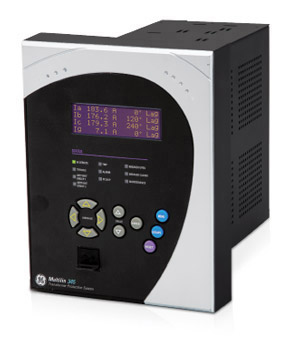Control Wave Micro 396563-07-4 CPU33 240mA @ 3.3VDC
CAUTION
When installing units in a hazardous area, make sure all installation components selected are labeled for use in such areas.
Installation and maintenance must be performed only when the area is known to be
non-hazardous.
Installation in a hazardous area could result in personal injury or property damage.
Always turn off the power to the ControlWave Micro before you attempt any type of wiring.
Wiring of powered equipment could result in personal injury or property damage.
To avoid circuit damage when working inside the unit, use appropriate electrostatic
discharge precautions, such as wearing a grounded wrist strap.
Do not open enclosure unless area is known to be non hazardous.
SPECIFICATIONS: ControlWave Micro
POWER
External Power Input: 10.7 to 30 V dc (+12 V dc) or
21.7 to 30 V dc (+24 V dc), depending on configuration of jumpers switches, reverse polarity protection.
SPECIFICATIONS: ControlWave Micro
POWER
External Power Input: 10.7 to 30 V dc (+12 V dc) or
21.7 to 30 V dc (+24 V dc), depending on configuration of jumpers switches, reverse polarity protection.
Input: 10.7 to 30 V dc, 3A max, 36 watts max.
Reference ratings for each device are:
396560-01-6: 2 mA @ 3.3 V dc
396560-02-4: 2 mA @ 3.3 V dc
396563-16-3: 240 mA @ 3.3 V dc
396581-06-4: 145 mA @ 3.3 V dc
396657-02-8: 2A @ 24 V dc
4A @ 12 V dc
396686-01-0: 96 mA @ 120 V ac
40 mA@ 3.3 V dc
396897-02-9: 46 mA @ 3.3 V dc
24.3 mA @ Vext (11-30 V dc)
ENVIRONMENTAL
Operating Ambient Temperature: —40 to +70C.
Storage Temperature: —40 to +85C.
Operating Humidity: 15 to 95%, non-condensing.
WEIGHT ;0.36 kg (4-slot base unit or 4-slot expansion unit).
APPROVALS:ATEX/IECEx
ControlWave Micro Special Conditions for Safe Use
Connections made to RS-232 or RS-485 communications ports shall be mechanically secured in place with suitable screw connections to prevent loosening or disconnection during use.
When using Ethernet connections, the RJ45 (Ethernet) connection must have a mating
connector with a valid securing clip to prevent loosening or disconnection during use.
The USB connector on the IEC 62591 module shall not be used unless the area is known to be nonhazardous (non-flammable).
Install the ControlWave Micro within a suitable certified tool-accessible ATEX or IECEx approved IP54 or better enclosure.
The area in which the equipment is used should be a minimum of Pollution degree 2, as defined by IEC 60664-1 (that is, the environment should not contain conductive pollution and the equipment shall be installed in an indoor or sheltered location).
The equipment may be used in zone 2 with flammable gases.
The equipment may be used in the presence of flammable gases and vapors with apparatus groups IIC or IIB or IIA and with temperature classes T1 or T2 or T3 or T4.









